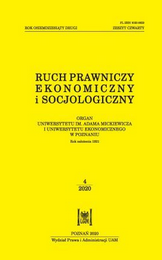CIĄGŁOŚĆ PRAWNA WSKAŹNIKÓW REFERENCYJNYCH STOPY PROCENTOWEJ
THE CONTINUED LEGAL VIABILITY OF INTEREST RATE BENCHMARKS
Author(s): Michał KruszkaSubject(s): Business Economy / Management, Methodology and research technology, Financial Markets
Published by: Uniwersytet Adama Mickiewicza
Keywords: interest rate benchmark; BMR; EURIBOR; LIBOR;
Summary/Abstract: The development of financial markets over the past few decades highlighted the very important role of financial benchmarks, which are used as a reference price for financial instruments or to determine interest payments. However, after the global financial crisis, allegations emerged that interbank interest rate benchmarks had been manipulated. A significant decrease in the size and importance of unsecured interbank transactions was observed as well. Both elements lower the credibility of the interest rate benchmarks used thus far. With the responsibility for financial stability in mind, the European Parliament and the Council of the European Union adopted a regulation on benchmarks (BMR) in 2016. The main purpose of this paper is to verify the hypothesis of the occurrence of material change, which could undermine continued legal viability of interest rate benchmarks. The main subject of the analysis was the development of the EURIBOR and LIBOR methodology. The results of the analysis showed that the new waterfall methodology, which utilizes eligible interbank transaction data, transaction-derived data, and data-based expert judgement, is a robust evolution of the quote-based methodology. This means that administrators did not change the benchmark’s underlying interest, and no one should diagnose the risk to the continued legal viability of EURIBOR and LIBOR rates.
Journal: Ruch Prawniczy, Ekonomiczny i Socjologiczny
- Issue Year: 82/2020
- Issue No: 4
- Page Range: 319-334
- Page Count: 16
- Language: Polish

